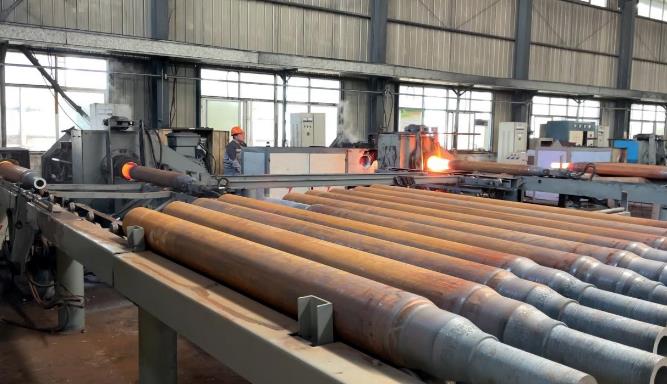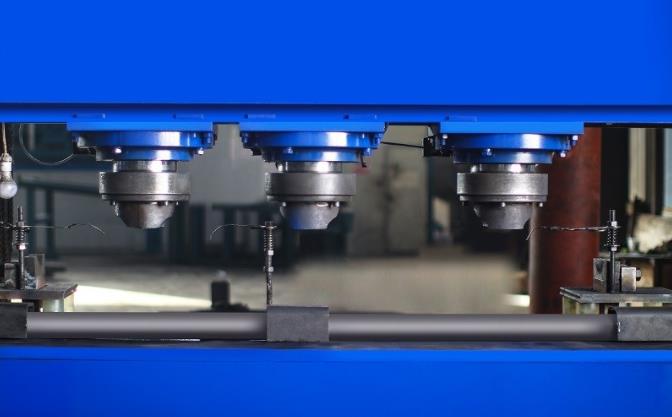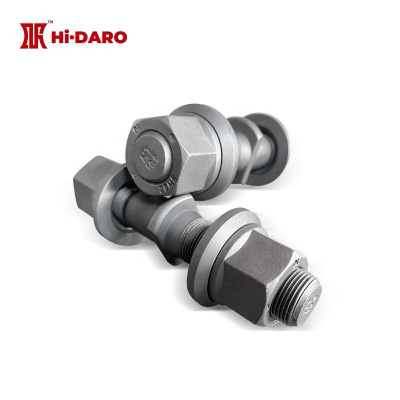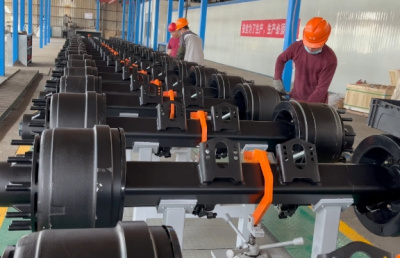How to make trailer axle? DARO takes you inside the axle line
For the rear axle of the trailer, many owners think that it is simple in structure and low in technical content, but it is not. As a driven bridge, although the design complexity of the rear axle of the trailer is not as good as that of the drive axle, it bears the bearing, braking, driving and other performance of the vehicle, which is directly related to driving safety.
It is very simple to produce a trailer rear axle, but it is not simple to produce a trailer rear axle with good performance. Aside from the front-end drawing design, as well as the quality inspection steps such as raw material testing, strength/accuracy testing, fatigue testing, impact testing, and salt spray testing in the production process, it is necessary to go through more than a dozen production processes.

Next, DARO Trailer Axle takes you inside the trailer axle production workshop to see how the trailer rear axle goes from raw material to finished product.
Raw material cutting

The raw material selected by DARO trailer axle is 20Mn2 high-strength alloy seamless steel pipe, and the wall thickness varies from 9mm-22mm according to the different types of trailer axle. Raw material cutting is to cut the raw material into a length that is easy to process according to the requirements of the drawing.
Hot spin rolling
The role of hot rolling is mainly two: one is from the appearance, the initial processing of the prototype of the shaft head, which provides a certain basis for a series of subsequent roughing and finishing; The second is the internal aspect, improve the mechanical properties of the steel pipe, fully avoid the poor quality of steel metallurgy, affecting the finished product structure mechanics.

When the quality of raw material metallurgy is poor, there will be a large number of non-metallic impurities, when it exists in continuous, aggregate, network, series, it is easy to cause the continuous fragmentation of the local matrix metal, plasticity and strength will be reduced, and it is easy to form microscopic cracks or internal acute angles in subsequent processing, ultimately leading to stress concentration and fatigue failure.
By hot rolling, the acicular preeutectoid ferrite inside the grain of raw materials can be crushed, which can significantly improve the Weichler structure, reduce the molding resistance and deformation energy consumption of raw materials, reduce or eliminate casting defects, and provide a solid foundation for the rigidity of finished products.
Cold pushing formula
Cold push square is a key step in the manufacture of square shaft tube, which can process round shaft tube into square shape.

Since the fiber direction of the seamless steel pipe is axial, in order to prevent cracks in the corners of the raw materials during the process of pushing, DARO chooses a hydraulic slow forming device, and in order to reduce the pushing force as much as possible and ensure the stability of the forming, the thickness of the raw materials is integrated with multiple groups of pushing rollers.
quench
Quenching is a common process in steel processing. DARO automatic quenching machine, greatly reduce manual intervention, higher operating accuracy.

During the quenching process, the austenite content inside the steel will gradually increase, and then through water cooling, austenite will be converted to martensite, which is the product that the quenching process wants to get, because of its high carbon content, it is very hard in nature, and has a very critical role in improving the stiffness and strength of the axle.
Thermal tempering
Tempering and quenching are inseparable. Just now we mentioned that martensite can be obtained after quenching, but the stability of the martensite that has just been converted is relatively poor, and a part of the austenite remains will be produced, and once the appropriate conditions are met, the transformation will occur, causing the deformation of the axle.

In addition, after quenching, there is generally a large residual thermal stress and organizational stress inside the axle, which often likes to be distributed in the corners or some holes, and if it is not eliminated in time, it is also easy to lead to deformation or cracking of the axle.
At this time, heat preservation and tempering should be carried out in time. The heat preservation and tempering process of DARO trailer axle can fully reduce or eliminate the quenching internal stress and improve the ductility and toughness of the shaft.
Shot blasting and sand blasting
The role of sandblasting process is mainly three, one of the most obvious is the surface cleaning role, after the previous heat treatment, the axle surface will remain some metal burrs or oxide layer, through sandblasting treatment can play a good cleaning role, improve the axle finish;

Secondly, sandblasting can change the physical and mechanical properties of the axle. The principle of the sandblasting machine is to spray a small sand particle at high speed to form an impact and cutting effect on the axle surface, increase the hardness of the axle surface, improve wear resistance and fatigue strength;
In addition, sandblasting can also lay the foundation for the subsequent painting process. After sandblasting, there will be some concave points on the surface of the axle after the sand is hit. When the subsequent primer or top paint is sprayed, the adhesion can be enhanced, the paint is not easy to fall off, and the anti-rust ability of the axle can be enhanced.
straightening
The role of straightening is to correct all kinds of bending caused by the production and processing of the axle, especially in the process of hot tempering treatment, although the strength is improved, it can not completely avoid the subtle bending phenomenon of the axle that can not be recognized by the naked eye.

If not through the straightening process to restore its deformation, to tell the truth, the appearance is not visible, but in use will affect the shaft beam or shaft end parts in the use of stress distribution, light will produce body vibration, driving instability, heavy will lead to axle cracks or directly broken shaft, affecting driving safety.
The DARO trailer axle uses an automatic multi-point straightening machine, which can automatically correct various bending phenomena occurring in the processing or heat treatment process of the axle, providing the basis for the processing accuracy of the finished product.
Primer spraying
The main function of the primer is to prevent rust. As we all know, the trailer axle is installed on the chassis, and the sand, dust, rain and even the salt used to melt snow on the road will erode the paint layer of the trailer axle.

Spray a layer of primer, can provide isolation, moisture-proof, anti-oxidation, anti-corrosion role, but also can lay a good foundation for the top paint.
CNC machining
The CNC machine tool processing is mainly for the shaft head position, and provides the installation basis for the wheel hub, bearings, brake drums and other parts installed on the subsequent shaft head, which is equivalent to the existence of the foundation of a high-rise building.

The higher the machining accuracy, the more it can provide protection for the subsequent assembly accuracy, avoid unnecessary friction loss of wheel end parts, improve the operational reliability of the wheel end system, and the longer the maintenance cycle.
Medium frequency induction processing
Medium frequency induction treatment is a strengthening process, mainly for the shaft head position. The axle head is used to connect key parts such as bearings and hubs. The strength of the axle head is crucial to ensure the stable performance output of each part under high-speed operation.

DARO medium frequency induction treatment adopts non-contact heat treatment strengthening technology, through the input of medium frequency current to form an alternating electromagnetic field, through the induction coil to transmit alternating current to the shaft head, forming the same frequency of induction electrodynamic force, rapid heating, deep heat penetration, internal and external temperature difference is small, uniform temperature field, not only can improve the strength and toughness of the axle to a greater extent. It also plays a positive role in its magnetism, corrosion resistance and oxidation resistance, improves its safety and stability, and prolongs the service life of the shaft body.
Automatic welding
In the production process of trailer axle, the welding work is mainly used in the welding of brake plate, spherical bearing, air chamber seat and other parts. After the welding is completed, the semi-finished product of the axle welding can be obtained.

The welding process of DARO trailer axle adopts robot automatic welding, and uses laser locating system to track and identify the position of the weld, ensuring the consistency, beauty and firmness of the weld, and more stable welding quality.
Topcoat spraying
The finish paint is the color of the finished trailer axle that we usually see, generally black and gray, and there are also customers who require spraying red, green, silver or other colors, which can be customized.

Through the integrated production line of painting and drying, the various dust pollution from the air exposed to the paint during the drying process can be reduced, and the quality and effect of the painting can be better guaranteed.
Finished assembly
The assembly needs to install the wheel hub, brake drum/brake disc, internal and external bearings and other components on the basis of welding semi-finished products to obtain the finished trailer axle.

The assembly accuracy mainly includes the dimensional accuracy, relative motion accuracy, mutual position accuracy, contact accuracy, etc., among which the dimensional accuracy also includes the matching accuracy and distance accuracy, and the precision control of the assembly process is mainly divided into two points: the accuracy of the parts themselves and the accuracy of the assembly technology.
In order to better ensure the accuracy of parts, DARO trailer axles choose purchased parts, such as bearings, wheels, brake drums, etc. all choose domestic strength brands, which are among the best in their respective fields. On the one hand, these brands have been deeply engaged in the accessories industry for many years, and the quality has been baptized and tested by the market, and has the corresponding quality assurance ability; On the other hand, after the arrival of the accessories, DARO also has to carry out a series of tests on its strength, accuracy, etc., and can be put into use after passing the test, adding a layer of guarantee to the quality.


In terms of assembly technology accuracy, DARO trailer axle selected an automated assembly line, with high-precision guidance, positioning, feed, adjustment, detection and other instruments, in highly repetitive assembly tasks, to ensure the high accuracy and consistency of the assembly process, and fully reduce or reduce the unqualified rate.
As you can see, if you want to make a reliable and durable trailer axle, you need to go through several processes, any process requires accurate and stable operation, and then cooperate with the quality inspection links, complement each other, and jointly cast the quality cornerstone of the finished trailer axle.







